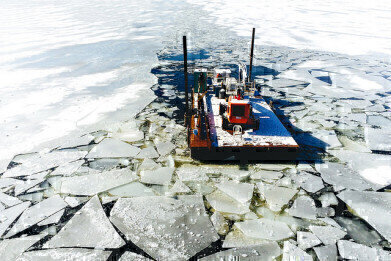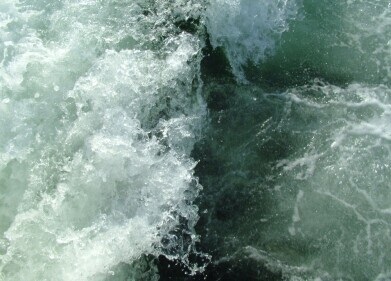Environmental Laboratory
Have Icebreakers Become Redundant?
Sep 10 2017
Crossing the Arctic used to be an endeavour fraught with perils, a voyage from which many explorers never returned. Over the years, technology and understanding of the region have grown to such an extent that these days the route is traversed with minimal danger – but it has remained a two-vessel mission: one to break the ice, the other to haul cargo.
That may now be coming to an end. Late last month, the Russian tanker Christophe de Margerie crossed the Arctic section of its route in record time of just six-and-a-half days – and for the first time ever without the aid of a traditional icebreaker.
A breakthrough in shipping technology
The Christophe de Margerie was making its maiden voyage from Norway to South Korea, a route which it covered in 19 days, representing an improvement in speed of almost a third. By skipping the Suez Canal and instead shooting straight across the Arctic Circle, the tanker was able to complete the journey in record time, and completely unaided.
Its milestone voyage was made possible due to two factors. Firstly, the ship itself is a modern marvel in engineering; it is specially designed to cut through ice of a thickness of 1.5m or less. With an inbuilt mini ice-breaker installed in its stern, the tanker is capable of reversing through thinner ice and navigating safely, as well as enjoying the traditional benefits of a tapered bow.
What’s more, it also boasts some attractive green assets. As a liquid natural gas (LNG) carrier, it’s capable of running off its own cargo, which allows it to cut its emissions of sulphur oxide (SO2) and nitrous oxide (N2O) by 90% and 80%, respectively. That can only be viewed as a good thing, especially when enhanced N2O emissions were recently found in an Arctic field warming experiment.
However, even with the ship’s advanced capabilities, its momentous feat would have been impossible even just a few years ago. Climate change has resulted in higher temperatures not only in the air, but in water too, meaning that there is less ice surrounding the North Pole than ever before.
A dark omen for the Arctic?
With ice melting in the Arctic at twice the rate of anywhere else in the world, there have been elevated concerns about how long the Arctic Sea ice will last. The breakthrough in tanker technology might spell good news for shipping routes, but increased traffic in the area will surely only contribute to the ice’s demise.
“Previously there was only a window of navigation from our summer to autumn, but this ship will be able to sail westwards from Sabetta which is the Yamal energy port, all year round and eastwards from July to December,” explained Bill Spears, a spokesperson for Sovcomflot, the company which own the ship. “Before, the northern sea route was only open for four months and you had to have ice-breakers – so it's a significant development.”
Indeed, it’s thought that the ice will have melted to such an extent that all ships will be able to make a similar journey to the Christophe de Margerie by 2040 during summer, and that year-round Arctic navigation will be possible (without an icebreaker) by 2100.
As a result, the redundancy of icebreakers is a very real possibility within the foreseeable future. While that may be good news for shipping efficiency, it could be disastrous for our environment.
Digital Edition
IET 34.2 March 2024
April 2024
Gas Detection - Biogas batch fermentation system for laboratory use with automatic gas analysis in real time Water/Wastewater - Upcycling sensors for sustainable nature management - Prist...
View all digital editions
Events
Apr 30 2024 Melbourne, Australia
Apr 30 2024 Birmingham, UK
May 03 2024 Seoul, South Korea
May 05 2024 Seville, Spain
May 06 2024 Minneapolis, MN, USA


















